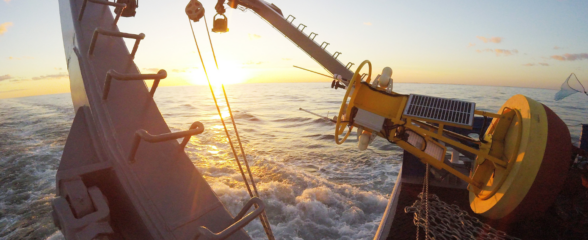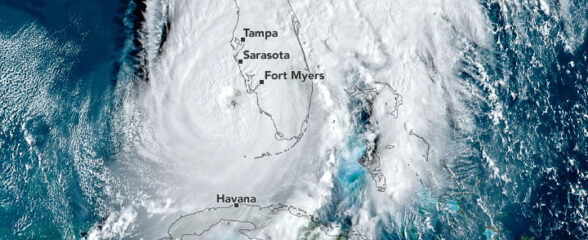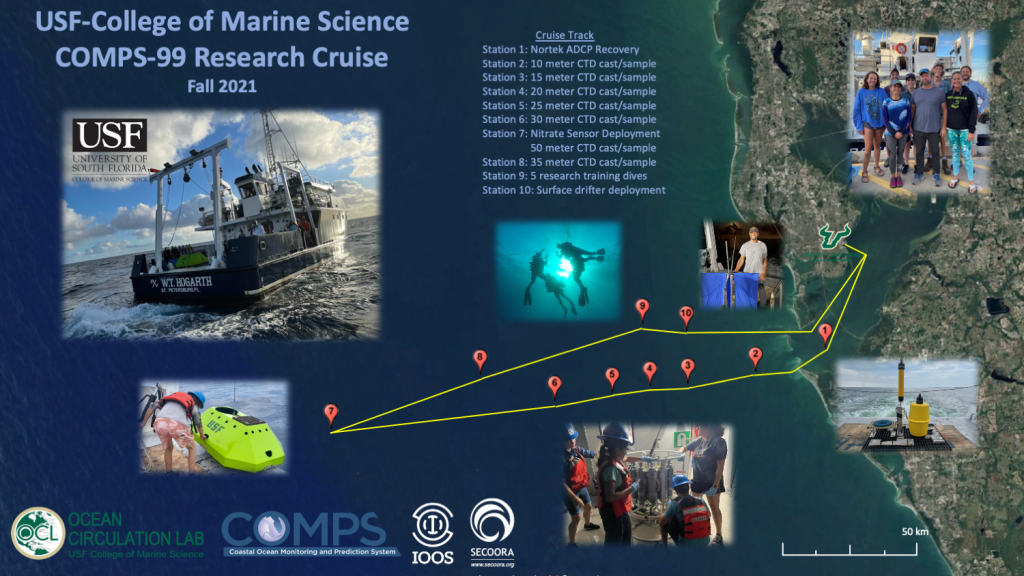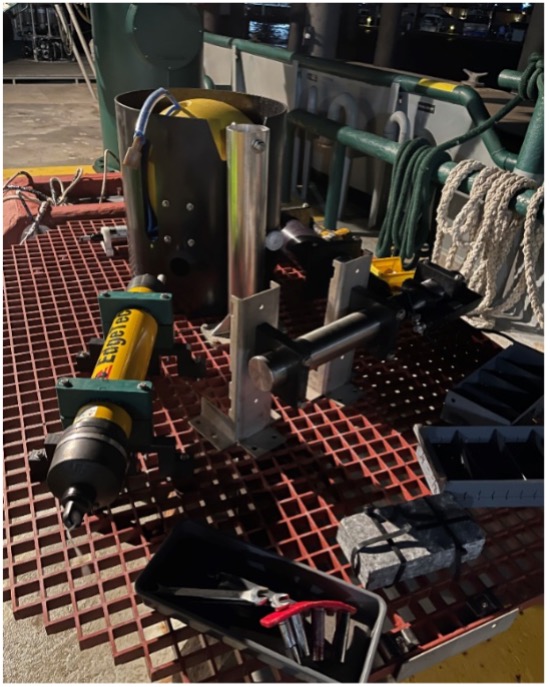The University of South Florida College of Marine Science’s Ocean Circulation Lab (USF CMS OCL) executed a 3-day mooring and dive training cruise in the Gulf of Mexico aboard the Florida Institute of Oceanography’s R/V Hogarth. The cruise plan included the deployment and recovery of sensors used in circulation studies related to Harmful Algal Blooms (HABs) as well as numerous training dives for new student research divers.
USF CMS OCL is headed by physical oceanographer Dr. Robert Weisberg, and the lab studies ocean circulation and its ecological impacts in the Gulf through direct observations and models. As part of SECOORA and OCL, USF Coastal Ocean Monitoring and Prediction System (COMPS) maintains a number of moored stations on the West Florida Shelf. The OCL uses data collected by COMPS buoys and bottom mounted sensors to validate and inform their numerical circulation models.
During the cruise, which took place October 25-27, scientists took nutrient and Red Tide (Karina brevis) water samples from 10 locations, conducted 7 CTD (Conductivity, Temperature, and Depth) sensor casts, and deployed bottom mounted sensor packages. The team also deployed one surface drifter for circulation model verification. Five research training dives, including night dives, were completed so that new scientific divers are trained and ready to work in the field.
The sensors are collecting data to measure nutrients and currents in a region where Red Tide commonly blooms. Researchers are investigating the links between mid-shelf K. brevis bloom generation and nutrients of deep-water origin brought onto the shelf by upwelling circulation.
This research cruise, conducted during rough weather, was made successful due to the exceptional teamwork and commitment of the professional research staff, cruise staff, graduate students and undergraduate students.
Related news

Funding Cuts to NOAA IOOS Will Hurt the Southeast
Proposed federal funding cuts would eliminate the IOOS Regional Observations budget for next year. Contrary to the budget Congress has already approved for this year, the Executive Branch wants these proposed cuts to go into effect in 2025.

SECOORA Webinar on the Rapid Intensification of Hurricane Ian: Warm Subsurface Water on the Wide Continental Shelf
Join us Thursday, April 24th at 12 PM ET for the April installment of the SECOORA Coastal Observing in Your Community Webinar Series! This month, we will hear from Dr. Yonggang Liu from the University of South Florida. He will discuss his research on the rapid intensification of Hurricane Ian in relation to anomalously warm subsurface water on the wide...

Webinar: SECOORA Data Portal Demo
Join us on Thursday, February 20, 2025 at 1:00 PM ET to learn more about the SECOORA Data Portal and how to navigate it. Axiom Data Science will be providing an overview of the portal, including how to search the Catalog and make a custom data view.


